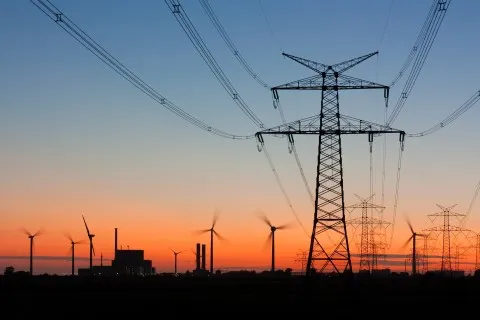
ASEAN's net import dependency predicted to hit 32% in 2030
It's just one of the many challenges in meeting baseload needs.
Developments in November-December 2015 have set a milestone in terms of what Association of Southeast Asian Nations (Asean) have long wanted to achieve - The Asean Economic Community.
The recent integration to create a single market and production base is very much a work in progress. It will bring together 600 million people from a region that will generate a gross domestic product of US$2.6 trillion (S$3.7 trillion) based on 2014 terms, making it the seventh largest economy in the world and third largest in Asia.
Even economic integration aside, economic development will propel future demand for energy. According to the International Energy Agency, demand for energy in this region expanded by two-and- a-half times between 1990 and 2013.
Now, with economic integration having begun, it will be inevitable that a host of industries will find themselves on a common turf, including the energy sector in the region. In so far as energy is concerned, the region comprises countries with diverse circumstances in energy supply and demand.
Take the instance of Malaysia. According to the Asia Pacific Economic Cooperation forum, Malaysia's indigenous oil reserves are projected to be depleted by 2030, thus shifting the economy to a net energy importer.
Net import dependency will reach 32% in 2030 from a net export position of 57% in 2002, according to the grouping.
The situation is likely to be more dire in other countries within Asean as there is a high - and sometimes sole - dependency on the likes of hydroelectric power. While estimates vary, it is well accepted that around 150 million people in Asean have no access to electricity. Rural electrification rates range widely throughout the Asean region, from 10% in Myanmar to 100% in Singapore.
At the recent Singapore International Energy Week 2015 forum, International Energy Agency Executive Director Dr. Fatih Birol said: "Southeast Asia is moving to the centre of the global energy arena, a trend that is underpinned by economic and demographic drivers, and that is set to continue for the foreseeable future. As the region’s importance grows, so too do the challenges and opportunities that are linked to its development”.
"Chief among those are meeting its increasing energy needs in a secure and sustainable manner; continuing to expand modern energy services for those that lack access; encouraging the adoption of energy-efficient practices; and limiting the rise of greenhouse-gas emissions, especially given the expanding role of coal in its energy mix," he said.
A key takeaway message in this is the need for clean and sustainable energy and this leads to the question of Asean's future baseload needs. Within the context of the energy sector, baseload is a term used to refer to the amount of power required to meet minimum demands based on reasonable economic requirements. Economies rely almost entirely on baseload power to operate properly.
For instance, industries cannot operate effectively, let alone grow, without a stable source of baseload power. Base load is required 24 hours a day, 365 days a year to run heavy industry such as manufacturing plants, smelters, mills, hospitals and refineries.
Blackouts in these heavy operations cause massive disruptions, damage equipment, put lives at extreme risk and ultimately cost the economy billions.
Within this context, baseload plays an important role. Base load needs to be constant, reliable, predictable and economical. It therefore generally requires the burning of fossil fuels, which have proven time and time again to be detrimental to the environment and the general population’s health. As it was pointed our during UN Climate Change Conference in Paris now the whole world tries to stop burning fossil fuels and turn to alternative energy sources such as renewables and nuclear.
For instance, in Malaysian climate change action plan to the United Nations for the Conference it is stated that by 2030 the country had planned to reduce greenhouse gas emissions intensity by 45%.



















 Advertise
Advertise







